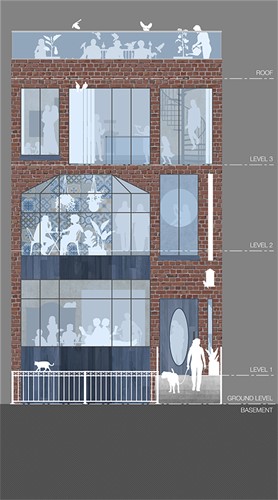
As a Junior Designer whose studies included minors in architectural engineering and sustainable environments, Vera collaborates with project teams in devising holistic project solutions – that is, solutions emerging from both systems-thinking and attention to details – for diverse community, education, and healthcare projects. She agrees with Antoine de Saint-Expéry, author of the classic book The Little Prince, that “It is only with the heart that one can see rightly; what is essential is invisible to the eye.”It’s therefore with thoughtfulness and compassion, along with a keen appreciation for our human connection to nature, that she consistently looks beyond a building’s physical expression to the human needs and experiences that inspire it. In this, she’s particularly drawn to the honest materiality, efficiency of space, and personal scale of Japanese architecture, pointing to architect Terunobu Fujimori as a particular source of inspiration for meaningful designs that can be simultaneously practical and fantastical. Her fascination with materiality also motivates her to experiment with wood, metal, and digital fabrication, an effort that also includes making furniture, as demonstrated by her coffee table “Swivel Beetle” which received a Cradle 2 Cradle Award for most sustainable piece of furniture.
To celebrate the firm's 40th anniversary, staff were challenged to share their imagination and design thinking by creating a row house concept. Here is Vera's.

My first step in designing the façade of my row house – the Gathering House – was to look inwardly at what it was that mattered most to me about building design. As I was brainstorming, I was coming up with abstract concepts as opposed to aesthetic descriptions—connection, variety, imagination, inclusion, play. The more I thought about it, the more I realized that the people occupying the building are what brings a space to life. Their unique uses of spaces give places character deeper than any structure or finish. Moreover, without people, a building is just a shell—it cannot give anything without someone to receive those benefits, and without regular use, can fall into disrepair altogether.
I wanted to celebrate the beauty of the symbiosis between humans and buildings and dedicated my façade to telling stories and showcasing relationships, imagining a house where family and friends would gather to enjoy each other’s company and make fond, lasting memories.